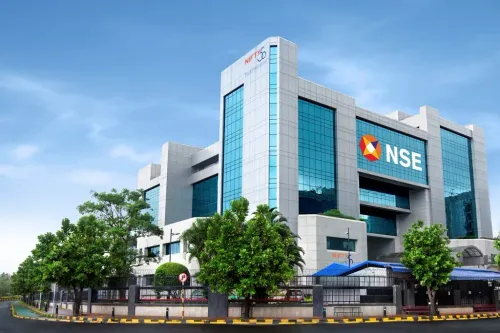Will India's construction equipment sector revenue increase by 6-8% in FY26?

Synopsis
Key Takeaways
- Projected revenue increase of 6-8% in FY26.
- Strong export performance with a 35% jump in the first half of FY26.
- Selective price hikes to counteract compliance costs.
- Continued volume growth of 2-4% expected.
- CEV-V norms will enhance global competitiveness.
New Delhi, Nov 13 (NationPress) The revenue of India's construction equipment sector is projected to increase by 6-8 percent in the current fiscal year (FY26), as indicated by a recent report. This growth is attributed to strategic price increases, robust export revenues, and stable steel costs.
Significant overseas demand plays a vital role in supporting this sector, especially in light of lower domestic demand and escalating equipment prices, according to Crisil Ratings’ findings.
The report highlights that selective price increases will help alleviate some of the higher compliance costs. Furthermore, consistent export returns and steady steel prices will aid in countering the pricing pressures posed by low-cost imports.
This scenario is expected to limit the decline in operating margins to 11 percent from approximately 12 percent in the previous fiscal year, thus maintaining stable credit metrics across manufacturers.
Volume growth for India’s construction equipment industry is anticipated to remain between 2-4 percent during this fiscal year and the next, as per the agency's analysis.
Crisil’s examination of 17 prominent manufacturers reveals that a 35 percent surge in exports during the first half of FY26 has been instrumental in offsetting the weakened domestic demand.
“Accelerated project awards and execution in the upcoming months will be crucial for fulfilling the Rs 11 lakh crore infrastructure budget. Continuous high infrastructure spending and increased private capital expenditure are essential for revitalizing domestic demand in the next fiscal year,” stated Anuj Sethi, Senior Director at Crisil Ratings.
“The sector is poised to gain international recognition with the implementation of CEV-V norms in January 2025, aligning domestic machinery with global standards,” remarked Poonam Upadhyay, Director at Crisil Ratings.
While adherence to CEV-V1 emission norms has escalated costs by 12-15 percent, it has also improved product reliability and acceptability, thereby boosting demand from regions like Africa and Latin America.
The new regulations grant access to advanced markets such as Europe, North America, and Japan, where cost efficiency and compliance are paramount, as noted in the report.









